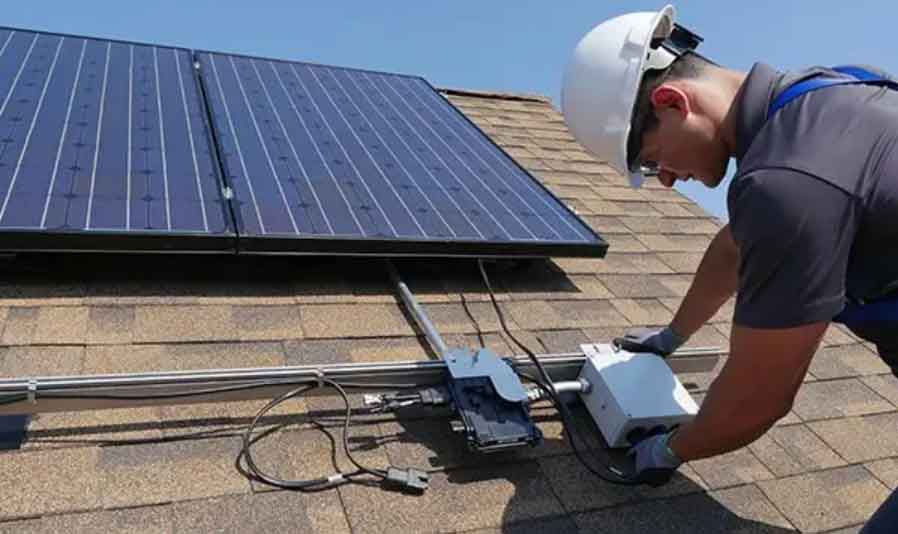
The solar power industry is experiencing rapid advancements, driven by the need for more efficient, reliable, and scalable energy solutions. Among these innovations, micro inverter technology stands out as a transformative development with the potential to redefine the future of solar power. This article explores the latest advances in micro inverter technology and their applications, highlighting the benefits and potential impact on residential, commercial, and utility-scale solar installations.
Understanding Micro Inverter
Micro inverter is small inverter attached to individual solar panels, converting the direct current (DC) generated by the panel into alternating current (AC) at the panel level. This contrasts with traditional string inverter, which handle the DC-to-AC conversion for a series of panels collectively. The decentralized approach of micro inverter offers several key advantages that are driving their adoption and innovation.
Advances in Micro Inverter Technology
1. Enhanced Efficiency
Recent advancements in micro inverter technology have focused on improving conversion efficiency. Modern micro inverter can achieve efficiency rates of over 96%, ensuring that a higher percentage of the solar energy generated is converted into usable electricity. This is particularly beneficial in scenarios where shading or partial panel soiling occurs, as each panel operates independently at its maximum efficiency.
2. Improved Durability and Longevity
Micro inverter is being designed with more robust materials and better cooling mechanisms to enhance their durability and longevity. Innovations in thermal management and advanced circuit design have resulted in micro inverter that can withstand harsh environmental conditions, reducing the need for replacements and maintenance.
3. Smart Grid Integration
The integration of micro inverter with smart grid technology represents a significant advancement. Modern micro inverter is equipped with communication capabilities that allow for real-time data exchange with the grid. This enables better energy management, demand response, and grid stability, facilitating the integration of more renewable energy sources into the power grid.
4. Enhanced Monitoring and Control
Advanced micro inverter come with sophisticated monitoring and control features. Homeowners and facility managers can access detailed performance data for each panel through mobile apps or web portals. This granular monitoring allows for proactive maintenance and optimization, ensuring the solar system operates at peak performance.
5. Scalability and Modular Design
Micro inverter offer a highly scalable and modular solution for solar installations. Their design allows for easy expansion of solar systems by adding more panels and micro inverter without significant changes to the existing setup. This flexibility is ideal for growing energy needs and future-proofing solar installations.
Applications of Micro Inverter Technology
1. Residential Solar Systems
Micro inverter is particularly well-suited for residential solar systems due to their ease of installation, enhanced safety, and superior performance in shaded conditions. Homeowners benefit from the higher energy yield, real-time monitoring, and increased reliability that micro inverter provide.
2. Commercial Solar Installations
In commercial settings, micro inverter offer significant advantages in terms of energy production and maintenance. Businesses can optimize their energy consumption and reduce operational costs through detailed monitoring and efficient energy management enabled by micro inverter.
3. Utility-Scale Solar Farms
Utility-scale solar farms are beginning to adopt micro inverter technology to improve overall system performance and grid integration. The decentralized nature of micro inverter enhances reliability and allows for better management of large-scale solar installations, contributing to grid stability and energy resilience.
4. Off-Grid and Remote Applications
Micro inverter is ideal for off-grid and remote applications where reliability and ease of maintenance are critical. Their ability to operate independently and withstand harsh conditions makes them suitable for powering remote communities, telecommunications towers, and other off-grid infrastructure.
Comparative Analysis of Micro Inverter Features
The following table provides a comparative analysis of the key features of traditional string inverter and modern micro inverter:
| Feature | Micro Inverter | String Inverter |
|---|---|---|
| Efficiency | Over 96%, independent panel optimization | Lower efficiency, limited by weakest panel |
| Durability | Enhanced durability with advanced materials | Lower durability, centralized vulnerability |
| Grid Integration | Smart grid-ready with real-time communication | Limited grid interaction capabilities |
| Monitoring and Control | Granular monitoring and control for each panel | Limited monitoring, usually at string level |
| Scalability | Highly scalable and modular | Less scalable, requires significant changes |
| Safety | Lower voltage, reduced risk of DC arcs | Higher voltage, increased safety risks |
Future Prospects
The future of solar power is bright, with micro inverter technology playing a crucial role in driving efficiency, reliability, and scalability. As technology continues to advance, we can expect the following trends to shape the future landscape of solar power:
- Integration with Energy Storage: The combination of micro inverter with energy storage systems will enable more efficient and reliable energy management, allowing for better utilization of solar power and greater independence from the grid.
- Artificial Intelligence and Machine Learning: The incorporation of AI and machine learning algorithms will enhance the predictive maintenance and optimization capabilities of micro inverter, further improving system performance and longevity.
- Cost Reduction: Continued research and development will lead to cost reductions in micro inverter technology, making it more accessible and attractive for a wider range of applications.
- Policy and Incentives: Government policies and incentives aimed at promoting renewable energy adoption will accelerate the deployment of micro inverter, driving innovation and market growth.
Conclusion
Advances in micro inverter technology are transforming the solar power industry, offering significant improvements in efficiency, durability, monitoring, and scalability. These innovations are not only enhancing the performance of residential and commercial solar installations but also paving the way for more reliable and integrated utility-scale solar farms. As the technology continues to evolve, micro inverter will play an increasingly vital role in the transition to a sustainable and resilient energy future. By staying abreast of these advancements, homeowners, businesses, and policymakers can make informed decisions that maximize the benefits of solar power, contributing to a cleaner and greener planet.
